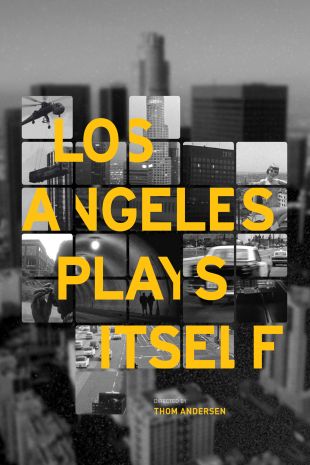
Thom Andersen's documentary examines the many ways the city of Los Angeles is represented -- and misrepresented -- on film. Drawing on an encyclopedic knowledge of not only movies but the city and its architecture, Andersen weaves a witty, passionate and erudite narration through a selection of film clips spanning the popular to the obscure. The narration is scholarly in tone, but it's so full of subtle humor, elegant digressions, and obvious affection for Andersen's subject that one's interest never flags despite the film's nearly three-hour running time (an intermission is included in a nostalgic nod to Andersen's childhood movie-going experiences.) This is a film so full of ideas and observations crackling off one another that it's almost essential to have a notebook handy to keep track of them all. Clips from Who Framed Roger Rabbit? and Chinatown lead to fascinating digressions into the historical events upon which both films are based. During a disquisition on Hollywood's habitual use of modern architecture -- of which he is a passionate and knowledgeable defender -- as shorthand for evil and decadence, he uses a clip from Billy Wilder's Double Indemnity to point out the bogus "authenticity" of the ubiquitous Spanish Revival houses so often used to evoke wholesomeness and tradition. Fond of taking on sacred cows, he delivers a detailed critique of L.A. Confidential's dubious politics and nostalgic sheen, and gives a tongue-in-cheek re-interpretation of Blade Runner's dystopian Los Angeles of the future as something more like an ideal version of the city, complete with thriving, multicultural street life. The film's most moving section is the final one, in which Andersen gives a detailed account of the work of Billy Woodberry (Bless Their Little Hearts), Charles Burnett (Killer of Sheep, To Sleep With Anger), and Haile Gerima (Bush Mama), a collective of African-American filmmakers who brought their own kind of neo-realism to the city's most disadvantaged neighborhoods in the late '70s, creating powerful, now nearly forgotten films about a dimension of the city never before shown onscreen. Andersen deserves credit for including their contributions alongside more well-known works and for creating a brilliant, provocative, one-of-a-kind cinematic essay of his own.
